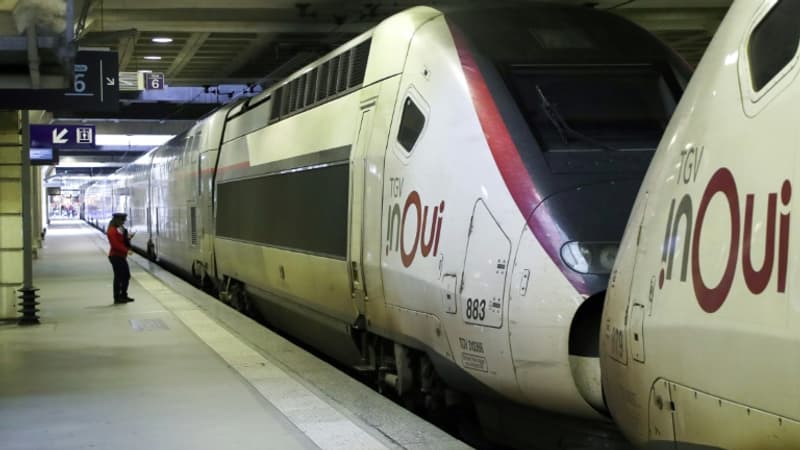Starting this Tuesday, taking the train will cost more. As announced last November, the SNCF is now beginning to apply an average increase of 5% in its prices. An unwanted increase for customers in a context of galloping inflation (and perception of already high prices on the SNCF) but which wants to be controlled according to the carrier.
• Why this increase?
Like many companies, the SNCF suffers the double pain of inflation: in its Waste of energy (the operator is the main industrial consumer of electricity) and in its other expense items.
By 2023 he has already done his math: “between the explosion in energy prices (+180%) and inflation in other concepts, our costs will increase by 13%”, explained Christophe Fanichet, head of SNCF Voyageurs, in November.
If SNCF Voyageurs passed all the increase in these costs into its prices, the price increase would therefore have to be almost 13%.
• +5% on average, a tariff shield?
Urged by the government to moderate increase the price of tickets and scared to see the appeal of the train erode if prices (and therefore sales volumes) rise too much, the SNCF has tried to save itself the goat and cabbage.
For the SNCF, this +5% allows “limiting the increase in the price of TGV tickets”. The company will bear the rest of the increase. “It is a cost of several hundred million euros for the SNCF”, underlines Christophe Fanichet.
And it is true that compared to the airlines that have been chaining double-digit inflation for several months (+19% annual in November), the increase decided by the SNCF may seem limited.
• Which trains will be spared from the increase?
For the SNCF, the challenge is to preserve the filling of its trains (very high for a year) and therefore the volumes, a source of profitability. Therefore, the operator has chosen not to apply a global increase in its prices, in particular so as not to penalize young people.
Specifically, the minimum TGV and TGV Ouigo prices (accessible from the opening of reservations for said period) will not increase, ensures the SNCF. Remember, however, that these low-priced offers are generally few in number and are quickly taken by storm…
pricing tables ouigo it won’t increase either. Remember that this is the SNCF low cost offer that represents 1 in 5 TGV, an offer especially appreciated by the youngest. There will always be 1 million tickets per month for less than 25 euros, says the SNCF.
The prices of the Max Joven and Senior passes will remain locked at 79 euros per month, as will the price of the Avantage card at 49 euros per year, which gives access to locked prices (from 39 euros) depending on the destinations and discounts for companions and children.
• Which trains will be affected by the increase?
All TGV Inoui fares (with the exception of minimum fares) are affected by an average increase of 5%. This can represent from a few euros to ten euros per ticket depending on the route.
However, in this announcement of an average increase limited to 5%, the word to remember is “average”. Therefore, it must be understood that there will be smaller but also larger increases depending on the destinations, dates and traveler profiles, but also because the minimum fares will not increase.
Thus, for the most popular destinations, during periods of large departures, some prices will automatically show an increase of more than 5%. This is the principle of supply and demand applied by the SNCF (yield management).
In fact, the more demand there is for a train, the more prices increase as reservations are made. Those who book last minute on the most popular routes are therefore likely to pay more than this 5% on average in certain cases.
This average increase of 5% should also apply to Intercity trains. But the decision is up to the state.
• Payment of professionals
The professionals who are already the main contributors to the SNCF’s income will also have to put their hands in their pockets. Business Premiere rates or contracts between the operator and the companies will also increase by an average of 5%.
For the SNCF, which tries at all costs to make return these customers, the risk of seeing some momentum change is real. Max Active and Active+ subscriptions will also increase by 5%.
• Are there other increases besides the tickets?
To limit the consequences of these increases in profitability, SNCF will make the conditions for changing and returning tickets less attractive.
Free admission goes from D-3 to D-6 before the day of departure and the costs range from 15 to 19 euros. The new conditions will go into effect at the beginning of February.
The idea is to put an end to this trend that would consist, according to the operator, of reserving several tickets on various dates and then being reimbursed, “the trains were full when they weren’t,” explains Alain Krakovitch.
This new condition will allow the SNCF time to return canceled or changed tickets to the market and optimize filling. A crucial goal for your finances. “The objective is to release the places sufficiently in advance so that other clients can buy them,” adds the manager.
• And what about the TERs?
This increase was limited to 5% on average will not apply to TERdaily trains whose prices are set by the regions after negotiations with the SNCF.
Some regions have already announced substantial increases, such as in Auvergne-Rhône-Alpes, where the regional council voted an 8% increase effective from January 1 for occasional customers and 2.8% for subscribers.
Source: BFM TV


